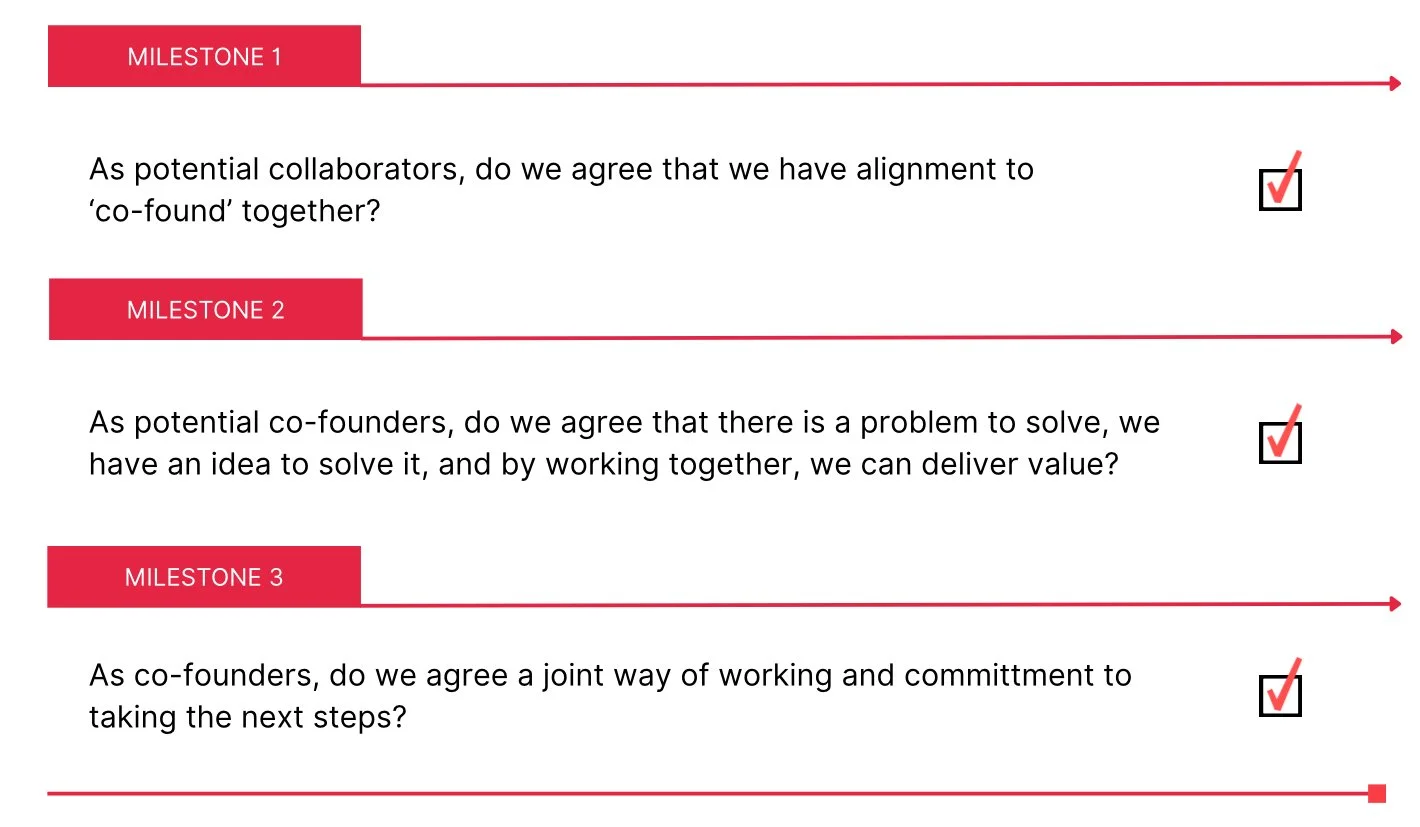Driving Deeper Strategic Alignment. Innovating with a Co-Founder's Mindset in Corporate Teams
Discover how we supported a S&P 400 manufacturing company drive deeper cross-functional alignment around their innovation strategy.
Within larger corporations, getting senior leadership alignment between functions / units on an innovation initiative is challenging. We see it time and time again with clients. Risk-averse decision-making. Competing priorities. Short-termism. Lack of clarity on shared value. A number of reasons why projects start and remain stuck in limbo and unprogressed.
But what if in the initial stages senior leaders approached an innovation initiative as co-founders? Iconic duos like Steve Jobs and Steve Wozniak didn't just share a passion for technology and innovation; they shared values, trust, and an unwavering commitment to their shared vision. They not only knew what their individual strengths and weaknesses were but how these can complement each other to drive the company forward. With Jobs' visionary marketing genius and Wozniak's unparalleled technical skills, they fostered a culture where questions about commitments and priorities shifted from the individual to the collective, driving Apple's success.
We believe that larger corporations could learn from embracing a 'co-founder’ relationship. Seeing your colleagues as “co-founders” could be a useful tool to deepen strategic alignment and establish a quicker, more robust foundation for launching projects.
We tested this theory in a recent workshop with a S&P 400 manufacturing company. The Chief Digital Officer and Head of Innovation Excellence were looking to explore where their respective expertise in AI and innovation could be leveraged to change how their company manages & governs innovation, an “innovation model powered by AI”.
So what did we do?
We asked the CDO & Head of IE and respective teams to view each other as co-founders, not as just individual contributors or collaborators. This was not about discarding their existing corporate roles but about adding a layer of ownership and shared purpose to their efforts, acting as one team with a singular focus.
To facilitate this we introduced a set of milestone questions. Both teams needed to reach unanimous agreement on these before moving forward. The process wasn't about rushing to the next phase but about achieving consensus at each critical juncture. Successful co-founders wouldn't start a business venture without mutual agreement on these questions, a standard that corporate leaders and teams should also uphold. These milestones included:
During the course of the workshop we saw that the dialogue between the teams evolved, shifting from siloed strengths and motivations towards a unified team approach.
The impact? By the end of the day, two teams that had aspired to work more closely together but struggled to take the next step crafted a cohesive pitch for a new innovation model.
Clearly, this method isn't a magic bullet. But it fosters a culture where risks are shared, setbacks become joint learning opportunities, and achievements are celebrated together. If this approach can inspire every team member to be genuinely invested and excited about the outcomes, we believe it is more than worth the effort.


